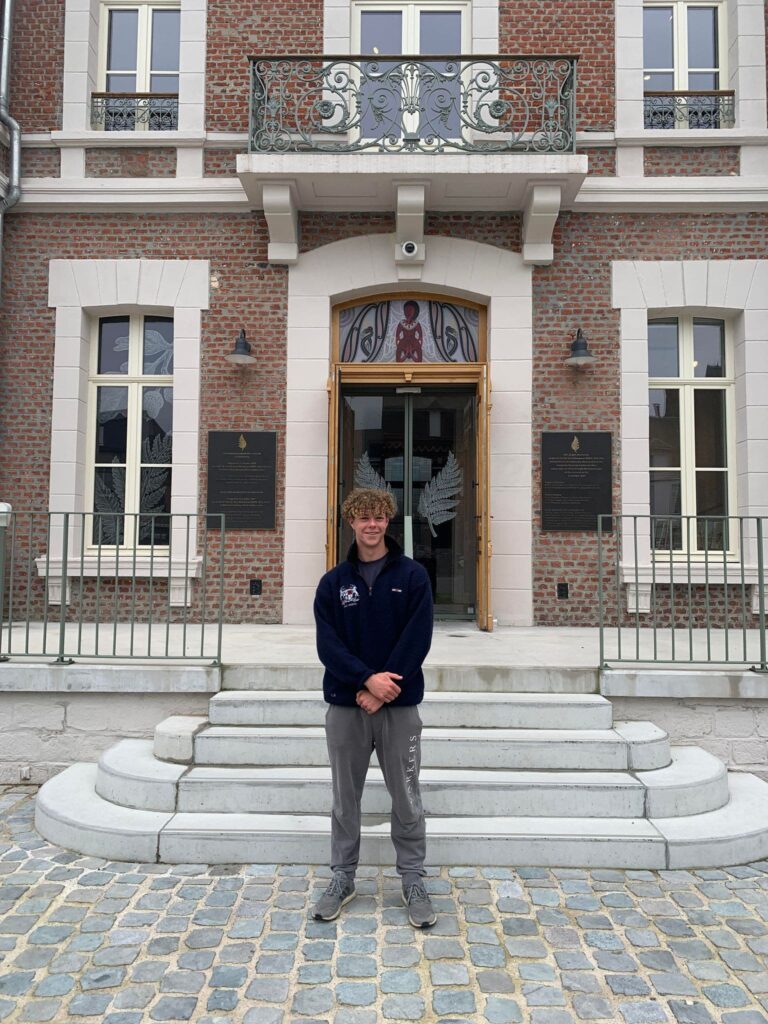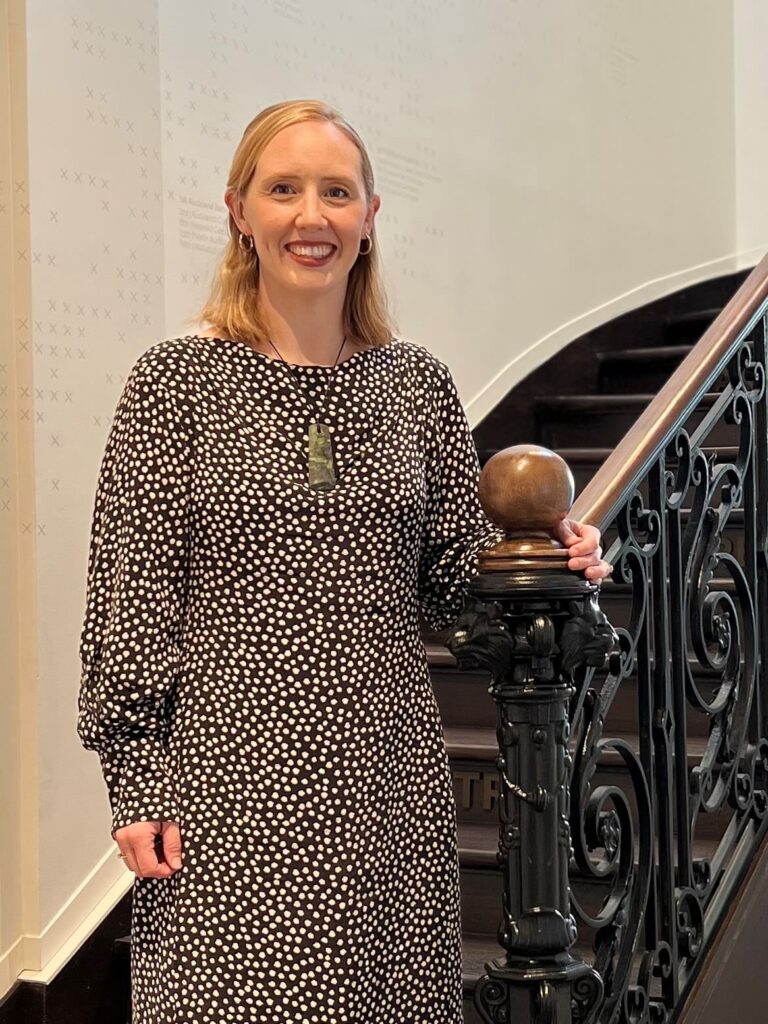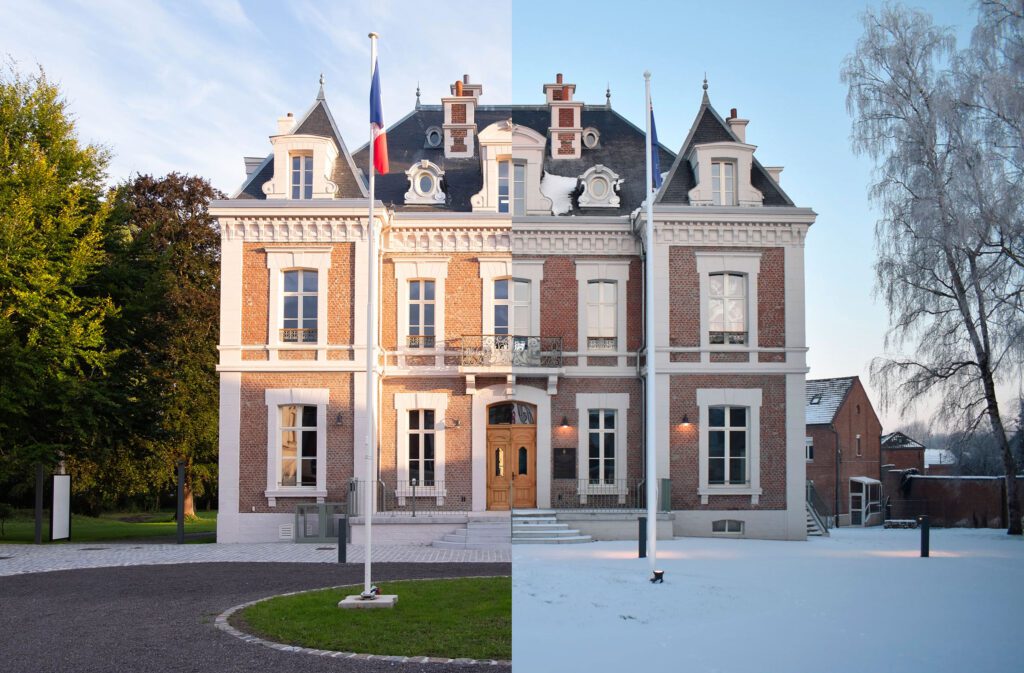NZ Liberation Museum’s first year delivers many milestones – and stories.
The opening of Te Arawhata has inspired – and uncovered – many personal stories of soldiers and their families.
Since the launch of the museum in Le Quesnoy, thousands of people have visited, including many New Zealanders making the pilgrimage to the small French town alongside French locals and other nationalities.
Two, and sometimes three, generations of Kiwi families have visited Te Arawhata to connect and remember their relatives who fought in Le Quesnoy and on the Western Front.
It’s more than just numbers

Families like 16-year-old Otago Boys High School student Cameron Brown and his mum, Larissa, visited Le Quesnoy to trace the history of Cameron’s great grandfather, Frederick Lyders.
Frederick never quite made it to Le Quesnoy to help liberate the town after he was wounded, however Cameron’s visit to Te Arawhata and the Western Front inspired him to delve into his family’s rich war history.
“The most striking thing after studying World War One at school was how many soldiers died or were badly wounded,” said Cameron. “Researching more deeply, and seeing what my family went through, makes it so much more poignant because it’s more than just numbers.”

For Ashleigh Bolton and Matt Deverell, visiting Te Arawhata was a way to connect with Ashleigh’s great grandfather who fought at Le Quesnoy and Matt’s great great grandfather who died in the Somme.
“It is important to us to visit these places to honour their stories,” said Ashleigh. “As part of our trip, we were excited about Te Arawhata and this beautiful museum helped to extend our learning and the story of Le Quesnoy.”
Key events and milestones
Following the emotional dawn blessing and opening ceremony of October 11, 2023, there have been a number of key events throughout the year including the reveal of the All Blacks’ Bench in February and the museum’s first Anzac Day since opening its doors.
The carved All Blacks’ bench donated to the museum by NZ Rugby represented the enduring friendship between New Zealand and the people of Le Quesnoy.
Ngāti Rānana, the London Māori club, blessed the bench at a ceremony attended by Marie Sophie Lesne – Mayor of Le Quesnoy, Caroline Bilkey – New Zealand’s ambassador to France, and former All Black Andrew Mehrtens, local dignitaries, Quercitains, and of course many Kiwis.
Anzac Day, which is commemorated in Le Quesnoy on the nearest Sunday to April 25, was the first since the museum doors opened. It was an incredibly special day with New Zealanders remembering the sacrifice of Kiwi soldiers side by side with the people of Le Quesnoy.
“Being part of Anzac Day in Le Quesnoy means you become a part of this community formed through the remembrance of our shared history. This is something to be remembered and celebrated,” said former Museum Director Josh Hansen at the time.
The museum has had several visiting dignitaries, including Defence Minister Judith Collins on Anzac Day who was touched by Te Arawhata’s stories and exhibits.
An emotional response

The Te Arawhata experience highlights the deep respect for civilian life during the liberation as an essential part of the Le Quesnoy story.
Museum Director Lizzie Wratislav, who joined the museum in September, said the Wētā Workshop visitor experience evokes an emotional response from those who visit.
“It is incredible to see people’s responses and I’m proud to be part of something that means so much. We also know travelers are increasingly looking for experiences where they unearth something new, like discovering family connections.
“Te Arawhata and the Western Front are places where all people – not just Kiwis – can come to understand more about their history and identity.”
Keeping it local
The Te Arawhata experience highlights the deep respect for civilian life during the liberation as an essential part of the Le Quesnoy story.
Museum Director Lizzie Wratislav, who joined the museum in September, said the Wētā Workshop visitor experience evokes an emotional response from those who visit.
“It is incredible to see people’s responses and I’m proud to be part of something that means so much. We also know travelers are increasingly looking for experiences where they unearth something new, like discovering family connections.
“Te Arawhata and the Western Front are places where all people – not just Kiwis – can come to understand more about their history and identity.”
The next generation
An essential part of creating a connection between young people and Te Arawhata is our schools programme for New Zealand and European based schools.
Many New Zealand schools have visited during the museum’s first year, including Otago Boys High School, Invercargill’s James Hargest College, Southland Girls’ High School, and Woodford House in Hawkes Bay.
“Te Arawhata is a great place to come to visit and to learn,” said teacher Catherine Patterson from James Hargest College which is named after Southland farmer Brigadier James Hargest who fought on the western front and at Gallipoli.
“The museum is really valuable educationally from a history point of view, but also from a language perspective, having English, French and Te Reo all there intermingling is cool.”
Te Arawhata takes people on an emotional journey with human stories of the liberation brought to the fore throughout the museum and the enduring friendship between Le Quesnoy and New Zealand a key part of our story.
But the visitor experience has so many entry points, says Wratislav, there’s something for everyone be it history, art, technology, or international relations.
“Young people are key to keeping the stories of Le Quesnoy and the Western Front alive and we look forward to welcoming more schools in 2025. Te Arawhata is an incredibly powerful place to visit and our focus is on further establishing the museum as New Zealand’s tūrangawaewae on the Western Front.”
